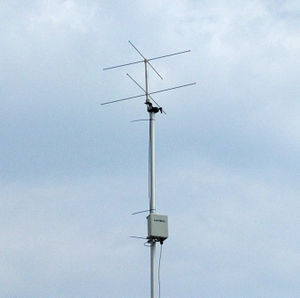Difference between revisions of "No rotator"
From SatNOGS Wiki
| Line 28: | Line 28: | ||
{| {{table}} | {| {{table}} | ||
| align="center" style="background:#f0f0f0;"|'''Part''' | | align="center" style="background:#f0f0f0;"|'''Part''' | ||
| − | |||
| align="center" style="background:#f0f0f0;"|'''Qty''' | | align="center" style="background:#f0f0f0;"|'''Qty''' | ||
| align="center" style="background:#f0f0f0;"|'''Source''' | | align="center" style="background:#f0f0f0;"|'''Source''' | ||
| align="center" style="background:#f0f0f0;"|'''Price''' | | align="center" style="background:#f0f0f0;"|'''Price''' | ||
|- | |- | ||
| − | | || || || | + | | <span style="color:red">RTL-SDR</span> || 1 || [https://www.nooelec.com/store/sdr/sdr-receivers/nesdr-smart-sdr.html] || 21 |
|} | |} | ||
Revision as of 11:02, 23 June 2017
| No-Rotator | |
|---|---|
| Information | |
| Type: | No-Rotator ground station for SatNOGS network. |
| Cost: | |
| Release Information | |
| Status: | Working |
| Latest Release: | [ ] |
| Repository: | [] |
| Documentation: | [] |
No-Rotator ground station it uses a static antenna usually in VHF.
A Turnstile antenna that tuned at ~137MHz is used for NOAA satellites.
Some Turnstile antenna designs, it's wide enough to receive VHF band at 144 - 146 MHz.
For more vertical satellite passes, UHF Helical antennas receives satellites at 432 - 438 MHz,
e.g. [1]
Bill of Materials
The materials are categorized into 3 groups:
- RF components
- Client components
- Hardware components
| Part | Qty | Source | Price |
| RTL-SDR | 1 | [2] | 21 |
